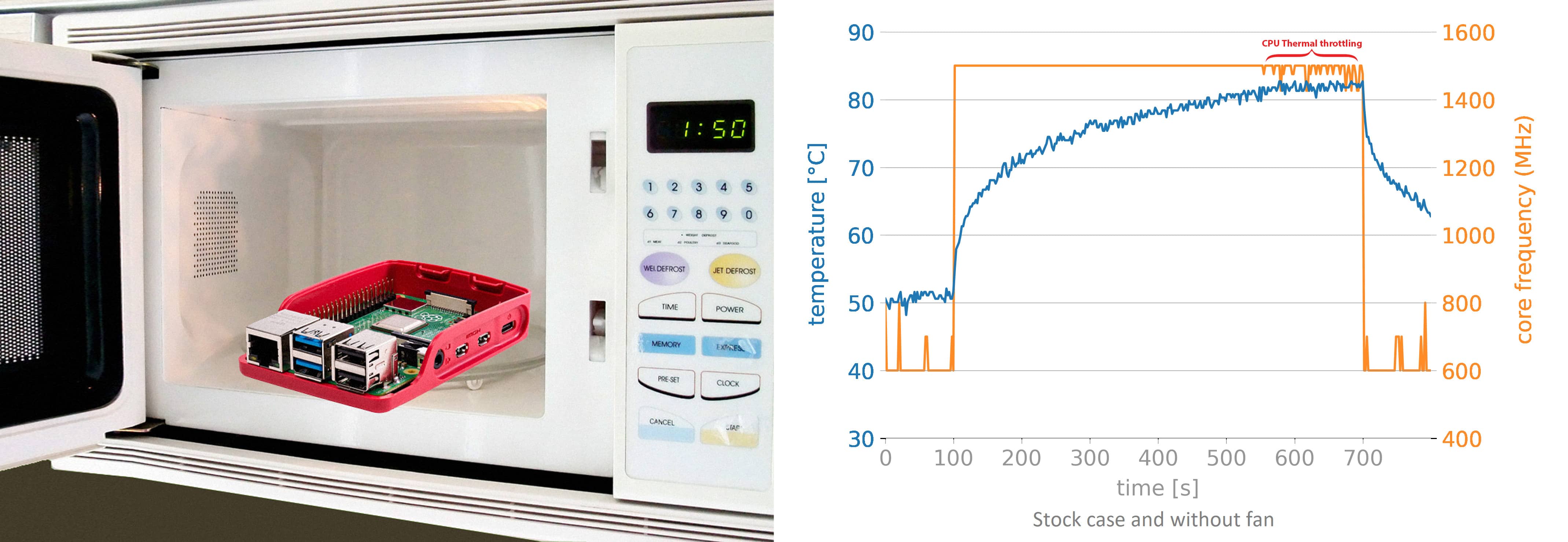Can this makeshift vertical case keep the Pi cool?

The Raspberry Pi 4 offers an excellent upgrade to the preceding Pi 3B+, but keeping the new model from overheating can be a challenge. Users have tried many techniques to tackle this issue, from running the Pi in the open air to utilizing cooling rigs with fans attached. But as vertical cases are gaining popularity, can my DIY vertical case keep the Broadcom BCM2711B0 quad-core A72 SOC (system on chip)—cool? Spoiler alert: Surprisingly, yes.
First of all, why subject your Raspberry Pi to this level of stress? In the case of Raspberry Pi 4, the A72 CPU is so powerful that it can overheat if it doesn’t have enough cooling. This results in the CPU being thermal throttled (governed) to reduce the power consumption and in turn reducing heat generation. The Raspberry Pi 3B+ and predecessors could also overheat, but this was less of an issue for the majority of use cases. A quick stress test will reveal if the Raspberry Pi 4 can run at maximum CPU-loads in its case/environment without overheating or throttling.
The goal of this post is to create a graph, which depicts:
- A stabilization period at the beginning
- A period of time for full-load CPU
- View the CPU temperature
- View the CPU clocks (to witness if the CPU is being thermal throttled, or not)
I searched the Internet for existing methods for stress testing the Pi and stumbled upon Stressberry. The package is straightforward, as their documentation quotes “stressberry is a package for testing the core temperature under different loads, and it produces nice plots which can easily be compared”. The room temperature at the time was about 26ºC. The Raspberry Pi is operating at a stock clock speed of 1.5 GHz, since this is more relevant to the wider population
Chart notes:
- Blue = Temperature in degrees Celsius
- Orange = CPU clock speed (maximum 1500 MHz)
Test 1: Heat Sink, No Fan, Open air, Stock Case with open lids.

Creative visualization (but not inaccurate 😛) of the setup and the performance chart for the stock case setup
Towards the end of 10 minutes under full-load, the CPU was clearly in for trouble.
Test 2: Heat Sink, Fan, Open air, DIY Vertical Case.

Actual setup and the performance chart for the vertical setup